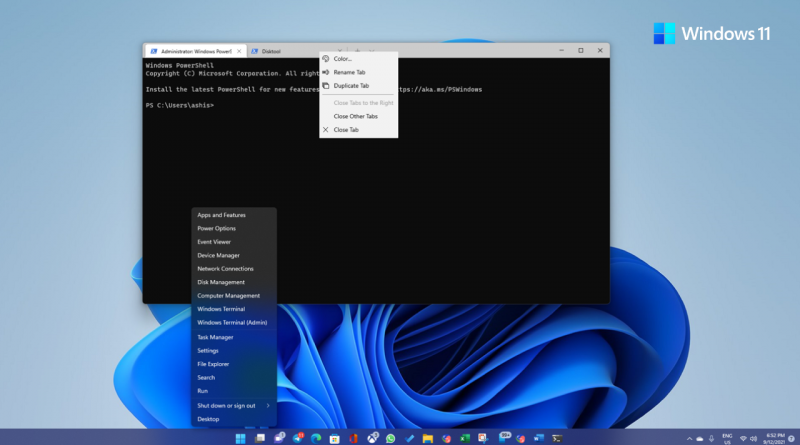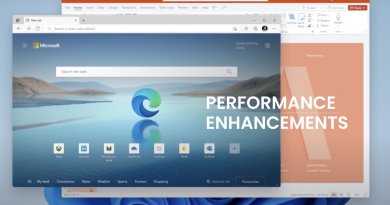Windows 11 Tips and Tricks You Should Try
Windows 11 announcement not only surprised everyone, keeping in mind Windows As A Serviceؙ talks in early days, but it came out colorful, stable, and performance-oriented right from its beta version. We have been using Windows 11 on a gaming PC right when it launched, and you will be surprised how many tricks it carries under its sleeve! If you have already upgraded or are still thinking of upgrading, this post will show some of the most impressive tips and tricks for Windows 11.
Windows 11 Tips and Tricks You Should Try
Even if you know these features, we highly recommend you try them out once. A lot has changed, and only when you try them, you can figure out how this fits well in your daily workflow.
- Snap Layouts
- Multitasking—Windows Shake
- Windows Terminal
- Advanced Sound Control
- Auto HDR for Gaming and Videos
- Open Legacy Context Menu
- Adding Folders to Start Menu
- Virtual Desktops
- Snap Layouts

While Windows 10 offered keyboard shortcuts (Win + arrow keys) to arrange open apps and layouts, the Snap Layouts in Windows 11 do it a lot better.
Integrated within the maximize button, when you click on it, it instantly offers Layouts where you can arrange 2 to 4 apps. Once you select the layout, you can choose from the rest of the open apps, and it will automatically place it. You can also set the apps into the layout by holding the title bar and then adding it to the preview section, which shows in the background.
The Snap options available at Settings > System > Multitasking further allow you to change the behavior according to liking. It includes snapping behavior, the preview of snap layout, the snap layouts preview, automatic fill, and auto-resizing of the adjacent window.
- Multitasking—Windows Shake

While Windows offers Win + D keyboard shortcut to minimize all the open apps and windows, what if you wanted to minimize all but one? That’s where Windows 11 Shake features come into the picture.
Hold the title bar of the open window you want to keep and shake it using the mouse. This feature comes in handy when you want to see anything on the desktop or don’t want one particular window to be gone only to spend time finding it. To bring back all the open windows, shake it again.
- Windows Terminal

Windows users have seen many command-line editors, including PowerShell, Command Prompt, and Windows Subsystem for Linux (WSL). The annoying part of these editors is they all seem to be outdated and limited. Microsoft appears to be replacing them with a better interface—The Windows Terminal. It has already replaced the Command Prompt from the Power Menu (Win +X)
Here is the list of features:
- Support for multiple tabs
- Azure Cloud Shell
- GPU accelerated Text Engine
- Support for themes
- Find Feature
- Add a custom name to each tab
So instead of opening several tabs, you can have one window, and each of them can be identified easily. It is perfect for power users who use the terminal for almost everything.
- Advanced Sound Control

It is one feature that we genuinely adore. Using headphones with a PC for gaming, music, and video is very common. Configuring it for the best experience had always been challenging.
Now, the sound settings offer advanced control for connected audio devices; things are straightforward. The list includes configuring format, left-right channel, Enhance audio settings, and Spatial sound configuration.
To configure, Go to Settings > Sound and select the speaker of headphones. You should be able to see all of these. The Spatial sound configuration is an excellent feature if your PC supports Dolby Atom or DTS. There are over 100s of headphones support for which it will automatically customize.
The Optional updates also offer driver updates right on the same page. It is optional and only if you need it, you should install it.
- Auto HDR for Gaming & Videos

HDR or High Dynamic Range is a big deal when it comes to gaming and videos. The feature enhances the video based on multiple distinct images in a single frame.
However, even if you have an HDR monitor, it’s not guaranteed to display HDR unless Windows supports it on the software level.
Windows 11 offers settings for supported monitors to turn on HDR for Games, Apps, and Video individually. You will need to configure it for the individual monitor if you are using multiple monitors.
To enable Auto HDR:
- Open Windows Settings (Win + I)
- Navigate to System > Display > HDR > Select Monitor
- Toggle on the options—Play Streaming HDR Video and Use HDR
The settings will be automatically applied.
- Open Legacy Context Menu

Windows 11 user interface is entirely different from Windows 10. It is not only better and colorful but also well organized. However, it still carries the legacy feature, which will take time to phase out.
One such legacy feature is now hidden in the context menu, i.e., when you right-click on any file or empty place.
Windows 11 context menu is organized such that it shows most used commands such as Cut-Copy-Paste, Sorting options, and so on. Everything else, such as context menu options added by applications, is now hidden under Show More options. If you want to open it directly, use Shift + F10 when in a folder or selection.
- Adding Folders to Start Menu

Compared to Windows 10, the Start Menu in Windows 11 is less cluttered and better laid out. Some users may find a couple of things missing, including a list of folders available along with the Power button.
If you go to Settings > Personalization > Start > Folders, you can add folders such as Documents, Downloads, Music, Network, and the User folder.
- Virtual Desktops

While the concept of multiple desktops was introduced in Windows 10, it was not used a lot because of limitations in the features. Starting with Windows 11, Virtual Desktops received several features that make it more attractive. The list includes
- Custom name to each of the desktops
- Preview apps on each of the desktops with mouse hover.
- Ability to drag and drop apps to a different desktop without switching
- Individual Background
All this makes it perfect to separate work and personal applications. Added to this, the personalization feature makes it even more attractive.
Conclusion:
Windows 11 is turning out to be a fantastic upgrade from Windows 10 not only in terms of performance but also in terms of customization, a better laid out menu, and look and feel.
These were some of the best Windows 11 tips and tricks that you can use every day to improve and boost your productivity.




